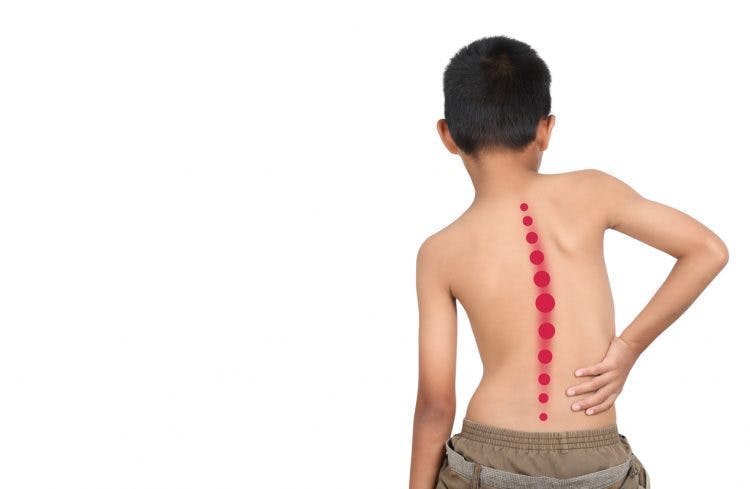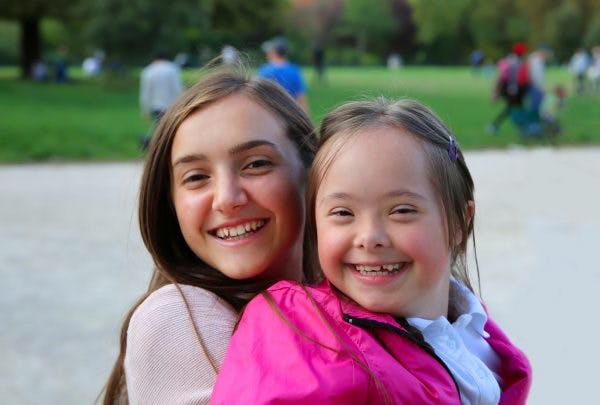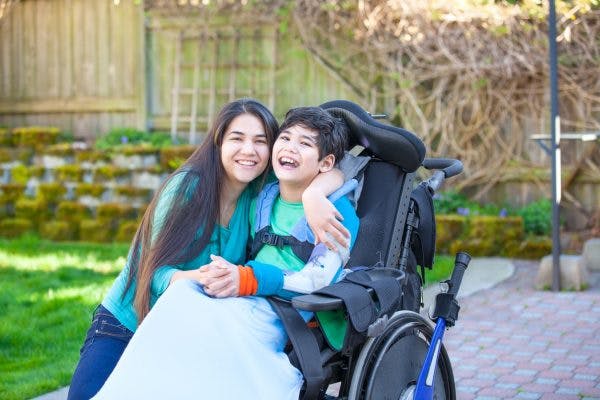Cerebral palsy is a motor disability that can significantly compromise one’s posture. If not properly managed, cerebral palsy can contribute to the development of a sideways curvature of the spine called scoliosis.
Generally, the more severe your child’s cerebral palsy is, the more likely they are to develop scoliosis. In fact, up to 64% of individuals with severe cerebral palsy have scoliosis.
To help you understand the link between cerebral palsy and scoliosis, this article will discuss:
- Can cerebral palsy cause scoliosis?
- What are the risks associated with scoliosis in individuals with cerebral palsy?
- How to manage scoliosis in individuals with cerebral palsy
Can Cerebral Palsy Cause Scoliosis?
Individuals with cerebral palsy can experience high or low muscle tone, or a combination of both. Low muscle tone in the core can make it difficult for children to sit upright without support and stay balanced. As a result, many individuals with poor trunk stability may start to regularly lean to the side.
Similarly, high muscle tone can also pull the body into abnormal postures. While it may not initially seem harmful, the body can get accustomed to consistently compromised posture, which can cause scoliosis to develop.
While cerebral palsy can cause scoliosis, the two conditions are not always related. Some individuals may have a genetic predisposition to scoliosis and other times, the cause is unknown. Of note, scoliosis cannot cause cerebral palsy.
While scoliosis most commonly develops during adolescence, individuals with cerebral palsy may demonstrate a significant deformity of the curvature of the spine before age 10. Moreover, while scoliosis can continue to progress well into adulthood, the brain damage that caused CP does not worsen. However, symptoms of cerebral palsy, such as abnormal muscle tone, can also progress throughout one’s lifetime if not properly managed.
Childhood and adolescence are crucial periods for growth and development, so reducing the progression of scoliosis as early as possible is essential to minimize complications.
In the following section, we’ll discuss the risks associated with scoliosis in individuals with CP.
Risks Associated with Co-Occurring Cerebral Palsy and Scoliosis
Poorly managed scoliosis can contribute to the development of additional motor impairments and complications in individuals with cerebral palsy.
Risks associated with co-occurring cerebral palsy and scoliosis include:
- Pain due to musculoskeletal strain
- Breathing difficulties due to the rib cage pressing against the lungs
- Cardiac problems due to the rib cage pressing against the heart
- Poor balance due to uneven weight distribution
- Further mobility restrictions due to limited range of motion
- Disproportional growth due to uneven muscle strain
Quickly identifying scoliosis and starting early management can significantly reduce the impact of complications on one’s day-to-day life.
In the following section, we’ll discuss management interventions that can help reduce the progression of scoliosis in individuals with CP.
How to Manage Scoliosis in Individuals with Cerebral Palsy
The overall goals for managing scoliosis in individuals with cerebral palsy are to improve functional abilities and reduce the progression of the spinal curve.
Some interventions to manage scoliosis include:
- Braces. Wearing a trunk brace can help stabilize the spine in an upright position and delay scoliosis progression. Typically, bracing is most effective for managing the early stages of scoliosis because that is when the spine is most flexible.
- Wheelchair modifications. A seat mold for wheelchairs can help promote correct posture and discourage leaning to the side. Lateral trunk supports can also be added to a wheelchair to reduce side-leaning.
- Core-engaging activities. While bracing and wheelchair modifications can help provide structural support, they should not be used all the time. Relying too heavily on trunk orthotics does not engage the core and can actually weaken trunk strength and stability when used for a significant period of time. Participating in activities that engage the core such as hippotherapy or swimming can help.
- Compression suits. Compression suits are a great alternative to braces. The strategically placed paneling helps support better postural alignment without restricting movement.
- Osteopathy. Osteopathy is an alternative medicine that uses manipulation and massage of the bones, joints, and muscles to improve the structural alignment of the body. This can be performed by a Doctor of Osteopathic Medicine (DO).
- Surgery. A 45° or greater curve of the spine will usually require surgery. The most commonly performed surgery for scoliosis is spinal fusion. It involves using metal rods, screws, and hooks to hold the spine together until the curved vertebrae fuse into a single bone.
Depending on the severity of your child’s scoliosis, some management interventions may be more ideal than others. Generally, the earlier scoliosis is identified, the more effective non-invasive interventions will be.
Speak to your child’s pediatrician to determine an ideal treatment plan for them.
Cerebral Palsy and Scoliosis: Key Points
Poor trunk control can make it challenging for children with cerebral palsy to sit upright. Because children are constantly growing, continuously compromised posture can cause their spine to develop a sideways curve.
Neuromuscular scoliosis can continue to progress even after adolescence. Seeking early intervention before the curve worsens can significantly improve posture, balance, and growth.
Additionally, the spine becomes less flexible with age, so early management can help avoid or delay the need for surgery. Hopefully, this article helped you understand why scoliosis develops in children with cerebral palsy and how to treat it.










